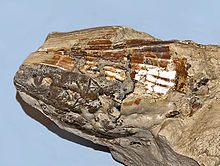
Bulla is a genus of medium to large hermaphrodite sea snails, shelled marine opisthobranch gastropod molluscs. These herbivorous snails are in the suborder Cephalaspidea, headshield slugs, and the order Opisthobranchia.

Strombus is a genus of medium to large sea snails, marine gastropod molluscs in the family Strombidae, which comprises the true conchs and their immediate relatives. The genus Strombus was named by Swedish Naturalist Carl Linnaeus in 1758. Around 50 living species were recognized, which vary in size from fairly small to very large. Six species live in the greater Caribbean region, including the queen conch, Strombus gigas, and the West Indian fighting conch, Strombus pugilis. However, since 2006, many species have been assigned to discrete genera. These new genera are, however, not yet found in most textbooks and collector's guides.

Calliostoma is a genus of small to medium-sized sea snails with gills and an operculum, marine gastropod molluscs within the family Calliostomatidae, the Calliostoma top snails. Previously this genus was placed within the family Trochidae. Calliostoma is the type genus of the family Calliostomatidae.

Buccinum is a genus of medium-sized sea snails, marine gastropod molluscs in the family Buccinidae, the true whelks.

Lithophaga, the date mussels, are a genus of medium-sized marine bivalve molluscs in the family Mytilidae. Some of the earliest fossil Lithophaga shells have been found in Mesozoic rocks from the Alps and from Vancouver Island.

Atrina fragilis, the fan mussel, is a species of large saltwater clam, a marine bivalve mollusc in the family Pinnidae, the pen shells.

The Pinnidae are a taxonomic family of large saltwater clams sometimes known as pen shells. They are marine bivalve molluscs in the order Pteriida.

Turbo is a genus of large sea snails with gills and an operculum, marine gastropod molluscs in the family Turbinidae, the turban snails.

Pinna is a genus of bivalve molluscs belonging to the family Pinnidae. The type species of the genus is Pinna rudis.

Atrina rigida, commonly called the rigid pen shell, is a species of bivalve mollusc in the family Pinnidae.

Diodora is a genus of small to medium-sized keyhole limpet in the family Fissurellidae.

Turricula is a genus of sea snails, marine gastropod mollusks in the family Clavatulidae.

Callista is a genus of saltwater clams, marine, bivalve molluscs in the family Veneridae, the venus clams.














